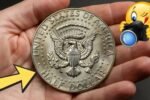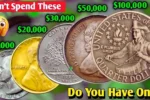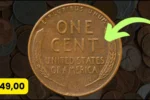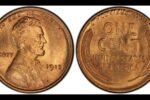The Rare: In the world of coin collecting, legends and mysteries abound. Yet few stories have captured the imagination of collectors and casual enthusiasts alike quite like the tale of the rare Bicentennial Quarter allegedly valued at a staggering $2.5 billion — and, astonishingly, still said to be in circulation.
A Brief History of the Bicentennial Quarter
Issued in 1975 and 1976 to commemorate the 200th anniversary of the United States’ independence, the Bicentennial Quarter features a distinctive reverse design depicting a colonial drummer boy, crafted by Jack L. Ahr. Unlike regular quarters, which bear the traditional eagle motif, these coins were minted with the dual date “1776–1976.” Over 1.6 billion were produced, making them common — or so it seems.
The Billion-Dollar Mystery
The story that has caused such a buzz centers on an extremely rare version of the Bicentennial Quarter. According to numismatic lore, a unique error coin was struck in 1976 — possibly as an experimental piece or a minting mistake using the wrong composition, planchet, or strike technique. What makes this quarter so special isn’t fully confirmed, but rumors suggest that it may have been made from an extremely rare alloy or includes a microscopic engraving that ties it to a classified government minting experiment.
While no official documentation has validated the coin’s exact attributes or existence, some claim it is insured for an astronomical $2.5 billion due to its historical significance, rarity, and mysterious origins. Whether the valuation is inflated or not, the legend persists, and with it, an ongoing treasure hunt among collectors.
Still in Circulation?
Adding to the intrigue is the claim that this valuable quarter was never officially taken out of circulation. Some believe it may have inadvertently been spent, lost, or exchanged in everyday transactions, lying unnoticed in a cash register, vending machine, or even a change jar. The idea that an ordinary-looking quarter in your pocket could be worth billions fuels excitement across the collecting community.
Separating Fact from Fiction
Experts remain skeptical. While rare error coins can command high prices — sometimes in the hundreds of thousands — a valuation of $2.5 billion seems implausible without verifiable provenance. The most valuable U.S. coins ever sold at auction, such as the 1933 Double Eagle or the 1794 Flowing Hair Dollar, reached prices of $7.6 million and $10 million respectively — nowhere near the purported value of the mythical Bicentennial Quarter.
Yet, this hasn’t stopped collectors from obsessively checking their change. Social media and online marketplaces are filled with hopeful sellers listing Bicentennial Quarters at wildly inflated prices, feeding into the phenomenon.
What to Look For
While finding a $2.5 billion coin might be a long shot, there are valuable variants of the Bicentennial Quarter worth watching for, including:
Proof versions with mirror-like finishes
Silver-clad coins made for collector sets
Double die errors or other striking anomalies
Off-center strikes or planchet errors
These can fetch anywhere from $20 to several thousand dollars, depending on condition and rarity.
Final Thoughts
Whether myth or reality, the legend of the $2.5 billion Bicentennial Quarter has captivated a generation of coin enthusiasts. It serves as a reminder of the thrill of the hunt — that within the most ordinary-looking pocket change, a fortune could be hiding. While the odds may be astronomical, the possibility, however remote, keeps the dream alive.
So next time you receive a quarter in change, take a second look. You might just be holding the rarest — and most valuable — coin in American history.




